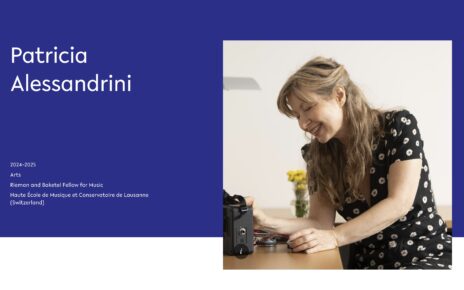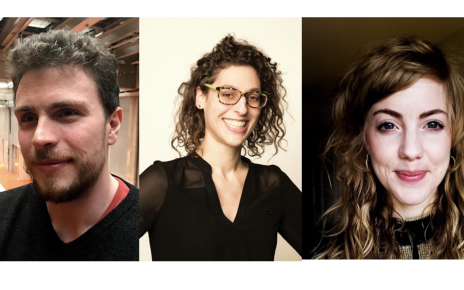Emma Frid is interviewed by Christer Gummeson on her Vetenskapsrådet / Swedish Research Council postdoctoral fellowship project for KTH Royal Institute of Technology News.
Source: https://www.kth.se/aktuellt/nyheter/musiken-for-alla-efter-behov-1.1101667 (In Swedish; English translation below.)
Music For All – According To Need
Everyone should be able to participate in music-making. Disability should not be a barrier. That’s the hope of media technology researcher Emma Frid, who is developing new digital musical instruments adapted for anyone who wants to engage with music.
In her research, Emma Frid leans towards the conviction that access to culture and cultural expression is a human right.
– Music can be an incredibly powerful way to express creativity and emotions, create a sense of belonging and community, and a tool to make one’s voice heard, says Emma Frid, who is an amateur musician herself and plays the piano and the violin.
The field of research focused on music technology for people with disabilities is still relatively small and a lot of work is centered on technologies for persons with physical disabilities. Emma Frid’s project is broader, focussing on those living with disabilities both physical and intellectual.
In collaboration with Dibber Rullen, a special school for students with intellectual disabilities and physical multiple disabilities in Solna outside Stockholm, she has developed digital prototypes for music experiences.
– This involves, for example, finding ways to enhance particular aspects of music through other senses. It could be that you feel the music through vibrations on your skin or that the music is represented visually, she says.
Playing with the body
The next step is to develop suitable interfaces for interaction, i.e. digital musical instruments.
The design of digital musical instruments involves everything from the choice of sensors and how to program the interaction with sound to how the music sounds. Using machine learning and gesture recognition techniques, the interaction can be tailored to each individual’s mobility. The aim is to make it possible for everyone to play a musical instrument, using their body, in some form.
For people with very reduced mobility, tongue and mouth sensors, eye tracking, or even signals from the brain can be used, instead of relying on hand gestures to create sounds.
The first digital tool developed in the project is a soft plush toy that can play music and vibrate.
Reduced mobility
The pupils at the Dibber Rullen Special School, aged 6-19, are mostly preverbal, meaning that many of them do not yet have verbal communication skills and have varying degrees of control over their movements. Many use wheelchairs and have multiple physical disabilities. Everyone in the school uses a special system, PODD, for alternative and augmented communication.
An important aspect of Emma Frid’s project is that the research methods are adapted to the needs of the pupils and the teaching methods used at the school.
– It is both necessary and challenging to always include the users in the development process; to design with rather than design for someone. Participation is a very important aspect in this context, since having an understanding of how technical systems work can create a sense of empowerment and autonomy, she says.
So far, the research project, which is three years long, has been limited by COVID-19 and the main work has been done remotely or via video recording. Hopefully, it will soon be possible to carry out experiments on-site at the school. The digital tools will then be tested by pupils and teachers to see if and how they may be used within their educational activities.



